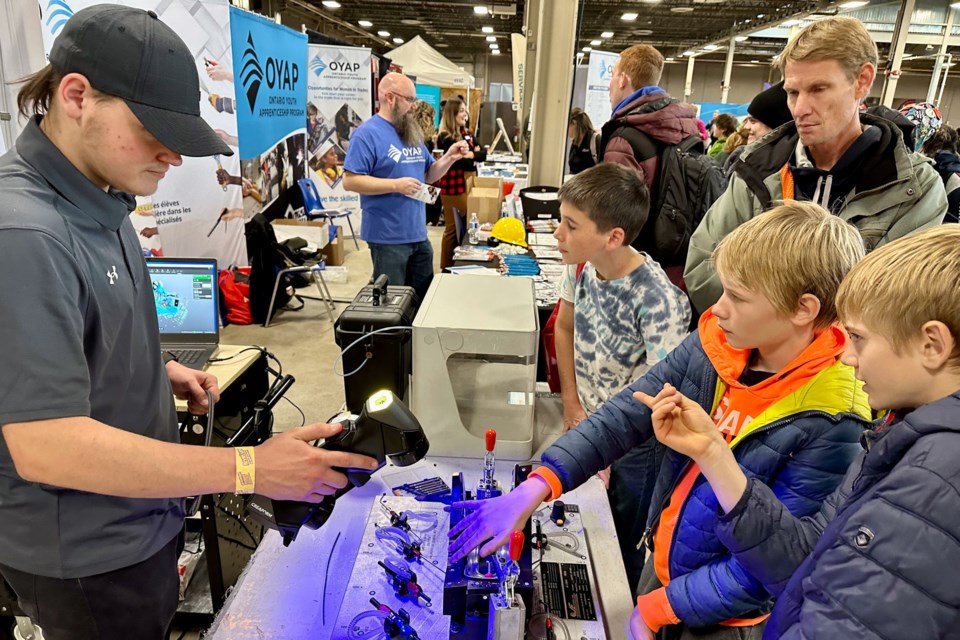
Innovating solutions to define, inspire, and shape livable communities across Niagara
Date: September 23, 2024
Time: 1:30pm – 4:30pm; PRICELESS Auction & Networking: 5pm – 7pm
Location: Lookout Point, 209 Tice Rd. Fonthill, ON L0S 1E0
ABOUT ENGAGE
The NEXTNiagara Council, in collaboration with the Greater Niagara Chamber of Commerce, is excited to present ENGAGE: a groundbreaking event aimed at fostering a dynamic conversation between young professionals (U40) and community leaders to identify what a livable community looks like in Niagara, through the lens of inclusion and sustainability, to address the evolving needs of the community. This event will serve as a platform for mutual understanding, innovation, and collaboration, with the goal of identifying solutions and recommendations to ensure Niagara is a place where young professionals want to live, stay and prosper.
EVENT OVERVIEW
COMMUNITY LEADERS: We invite you to join us in listening directly to the voices of Niagara’s young professionals. This is a valuable opportunity to understand what attracts them to our community and what they seek in a livable environment. By hearing their perspectives, you’ll gain insight into how we can make Niagara a place where they choose to build their careers and grow their families. Let’s work together to create a community that not only attracts but retains the next generation.
YOUNG PROFESSIONALS: Bring your fresh perspectives and unique insights into what constitutes a livable community, encompassing elements such as (but not limited to) social services, diversity, sustainability, safety, and affordability to create communities that work for all.
The event’s main focus will be to enable open, honest, and productive discussions between young professionals and community leaders. This will be facilitated through interactive roundtables, speakers, and networking opportunities, creating an environment where ideas can flow freely, and innovative solutions can be developed.
TOOLKIT FOR ATTENDEES:
Download this letter [PDF] that you can submit to your employer with information about the event, the benefits of your participation, and how the employer can support your attendance.
SPEAKERS:
🔥 Reza Pourvaziry — Chair of the Urban Economy Forum and Founder of the World Urban Pavilion, brings a global perspective to Niagara, aligning local initiatives with the United Nations’ Sustainable Development Goals. With a history of championing sustainable urbanization, Reza will inspire you to think big about Niagara’s potential in leading sustainable tourism and development.
🔥 Drew Toth — Founder of Elevate Living, a trailblazer in New Urbanism, will share how innovative real estate development can transform our communities. Drew believes that young leaders hold the power to shape the future of this region, and he’s ready to show you how collaboration is key to unlocking that potential.
PROFESSIONAL DEVELOPMENT:
Roundtables: Interactive roundtables will encourage attendees to collaborate and brainstorm potential solutions to challenges faced by all who live in our community and identify ideas that will help create and sustain livable communities across the region. These conversations will encourage creative thinking and provide actionable takeaways.
Keynote Speakers: Experts will shed light on emerging community engagement trends and set the local context.
Networking Opportunities: Engage will provide ample networking time, allowing attendees to connect with peers, professionals, and community leaders from a diverse range of industries. This interaction will foster relationships and knowledge-sharing that extend beyond the event itself.
PRICELESS AUCTION:
Bid With Your Time, Not Your Dime
What is the Priceless Auction?
The Priceless Auction is a distinctive auction platform where participants bid volunteer hours instead of money on a range of exclusive items and experiences. This innovative approach allows you to contribute to the community in a significant way while also competing for extraordinary rewards.
How It Works
- Browse and Bid: Explore our display of items and experiences available for auction. Each listing includes a description, and the minimum number of volunteer hours required to start bidding.
- Place Your Bid: Instead of bidding money, you bid the number of volunteer hours you’re willing to commit. The highest bidder at the end of the auction wins the item.
- Winning and Commitment: If you’re the highest bidder, you’ll receive a special card indicating the number of hours you pledged. This card serves as a record of your commitment.
- Volunteer and Record Hours: Complete your pledged volunteer hours at approved organizations and record your time on the card. You can accumulate hours over multiple sessions until you reach your pledged amount.
- Collect Your Auction Item: Once you’ve fulfilled your volunteer commitment, submit your completed card to us, and you’ll receive your prize as a token of our gratitude for your dedication.
AGENDA:
1:30pm – Registration & Welcome
2:00pm – Speakers
3:00pm – Roundtable 1
3:30pm – Break
4:00pm – Roundtable 2
5:00pm – Networking & PRICELESS
7:00pm – Event End
About NEXTNiagara:
NEXTNiagara is a GNCC Advisory Council that empowers young professionals by representing, engaging, and amplifying the voice of Niagara’s 40 and under community.
MISSION: Empowering Young Professionals
VISION: To see Niagara grow as a vibrant, inclusive, and prosperous community where the NEXT generation of leaders feel connected, represented, and engaged.
VALUES: Inclusive, Equitable, Forward-Thinking, Committed
NEXTNiagara is your place to:
- Connect through networking opportunities
- Advocate for issues that impact young professionals in the region
- Engage in personal and professional development opportunities
Free — Register Now











































